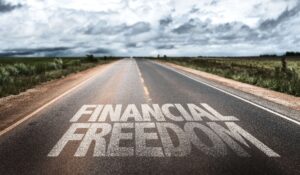
Before making a decision to file bankruptcy, please consult with an experienced bankruptcy attorney in California from Winterbotham Parham Teeple, a PC by calling 800.400.9000.
Chapter 7 Bankruptcy: A Fresh Start
Chapter 7 bankruptcy, often referred to as “liquidation bankruptcy,” provides a fresh start by liquidating non-exempt assets to pay off debts. It offers swift debt relief, typically completed within a few months. Eligible individuals or businesses can eliminate unsecured debts, such as credit card debt or medical bills, allowing them to regain control over their finances.
Chapter 13 Bankruptcy: Repayment and Reorganization
Chapter 13 bankruptcy, known as “reorganization bankruptcy,” offers a structured repayment plan spanning three to five years. This chapter is suitable for individuals with a steady income who aim to retain their assets while repaying a portion of their debts. It provides an opportunity to catch up on missed mortgage or car payments, making it an appealing option for those seeking to protect their homes or valuable possessions.
Impact on Everyday Life Processes
Automatic Stay:
Both Chapter 7 and Chapter 13 bankruptcy invoke an automatic stay, halting creditor collection activities such as foreclosure, repossession, or wage garnishment. This provides immediate relief and an opportunity to reevaluate your financial situation.
Debt Discharge:
In Chapter 7 bankruptcy, once the non-exempt assets are liquidated, remaining qualifying debts are discharged, offering a clean slate. Chapter 13 bankruptcy allows individuals to restructure and repay a portion of their debts, providing a realistic path toward financial stability.
Financial Rehabilitation:
Both chapters offer the chance to rebuild credit over time. While Chapter 7 bankruptcy remains on your credit report for up to 10 years, Chapter 13 is typically removed after seven years, allowing individuals to begin rebuilding their credit sooner.
Asset Retention:
Chapter 7 may involve the liquidation of non-exempt assets, whereas Chapter 13 allows individuals to retain their property while adhering to a repayment plan. This crucial distinction can significantly impact your everyday life, preserving your home, vehicle, and other valuable possessions.
Choosing the Right Option
Eligibility:
Understanding the eligibility requirements for each chapter is vital. Chapter 7 has stricter income guidelines, whereas Chapter 13 requires a regular income to meet the repayment obligations.
Debt Prioritization:
Assess your debts and financial goals to determine whether a complete discharge of qualifying debts through Chapter 7 or a structured repayment plan under Chapter 13 better aligns with your needs.
Long-Term Financial Outlook:
Consider your future financial prospects and stability. Chapter 13 allows you to retain assets and establish a disciplined repayment plan, while Chapter 7 offers immediate debt relief but may involve surrendering certain assets.
Start Your Path To Financial Freedom Today
Choosing the right bankruptcy option in California is a significant decision that impacts your financial future and everyday life processes. Whether you opt for the fresh start of Chapter 7 or the repayment and reorganization of Chapter 13, understanding the differences and evaluating their impact on asset retention, debt discharge, and credit rehabilitation is crucial. By seeking professional guidance from one of the expert attorneys at Winterbotham Parham Teeple, a PC and weighing your financial circumstances, you can navigate the bankruptcy process and pave the way for a brighter financial future. Remember, with careful planning and determination, bankruptcy can be a vital stepping stone toward regaining control over your finances. Call 800.400.9000 today and take your first step toward financial freedom.



